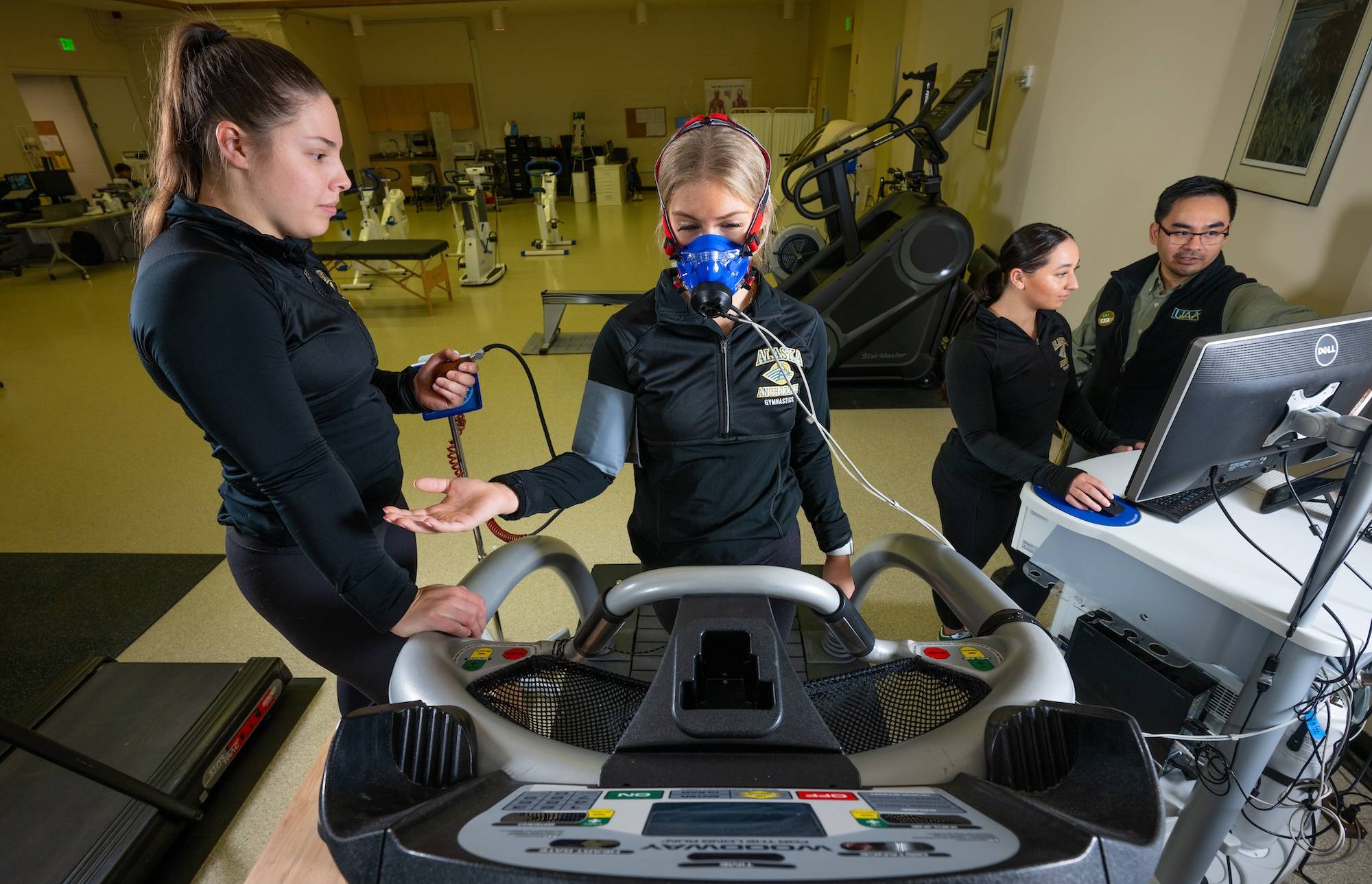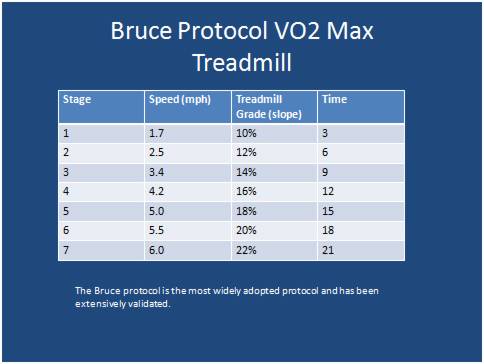VO2 Max Test


Test Description: VO2 Max
Test Length: 90 minutes
The VO2 (volume of oxygen) Max Test is considered the best measurement of cardiorespiratory fitness. It determines your maximum aerobic capacity, the body's ability to transport and utilize oxygen during exercise. A very high level of physical exertion is required to conduct this test.
The protocol for the VO2 max test starts with a warm-up stage then every three minutes the stage will increase in intensity (speed, incline and/or resistance). Data is gathered during each progressive stage. Upon reaching the maximum heart rate and/or peak values the exercise stages are stopped and the client cools-down for a period of time while additional data is gathered. Bruce Protocol Chart
Data Collected
VO2, VCO2, HR, grade, speed or watts, RER (respiratory exchange ratio), RPE (rate of perceived exertion), and metabolic parameters (calories, carbs, fat) The Parvo Medic TruOne metabolic monitor is used in the UAA Human Performance Lab. This metabolic cart is used at NASA, USOC (US Olympic Center), Cooper Institute, and many universities. The Parvo is one of the most accurate devices made.
Pricing & Scheduling
If you do not see any date available, the Human Performance Lab is fully booked or the test is not currently available. Contact hper@alaska.edu or call (907)786-4083 for more information.
Low/Moderate Risk: Clients must be "apparently healthy" and meet the American College of Sports Medicine
(ACSM) Risk Stratification criteria of Low Risk for a max test or of Moderate Risk
for submax test. A physician's medical clearance may be provided for authorization
in some instances. All clients must complete and submit the following forms prior
to their testing day: a health history, medical clearance (if Moderate Risk), and
Informed Consent (provided at time of test). No one with a risk stratification of High Risk will be allowed to be assessed in the
Human Performance Lab. We regret not being able to provide the cardiorespiratory testing
to this population though they may indicate higher performance capacities than some
of lower risk. In all cases we encourage checking with your physician prior to testing
and exercise training. Note: At the start of your appointment we will complete remaining paperwork and briefly
review test procedures.









